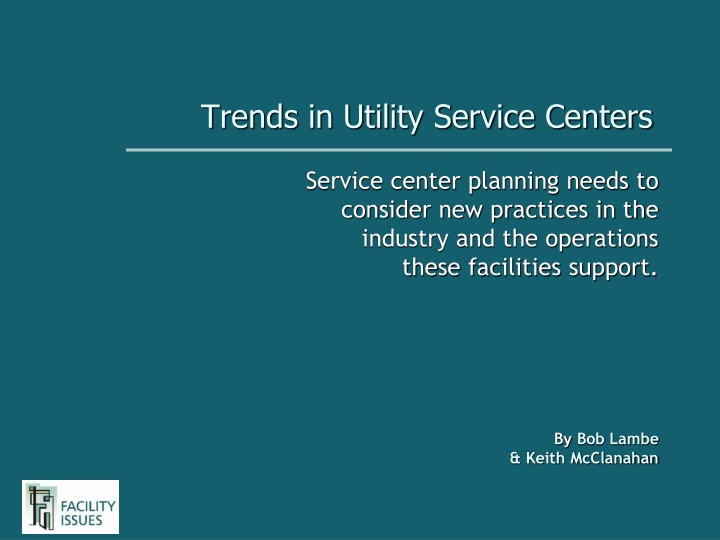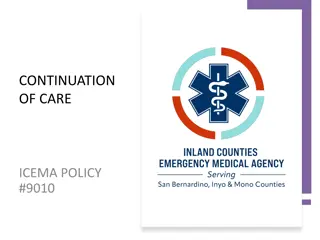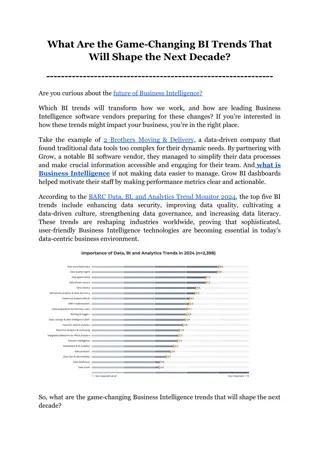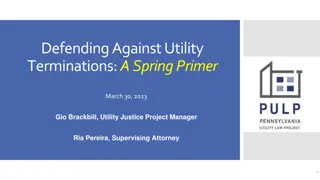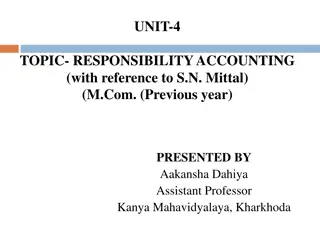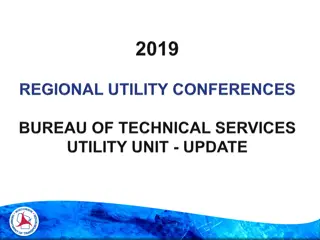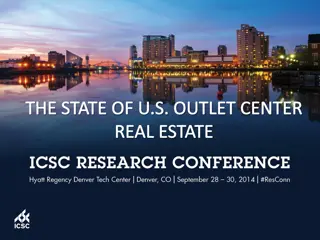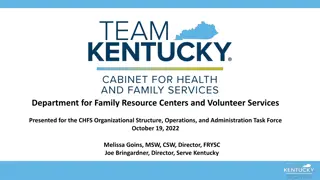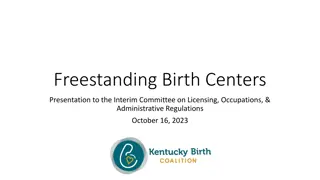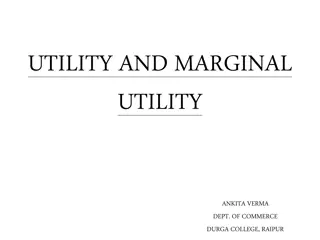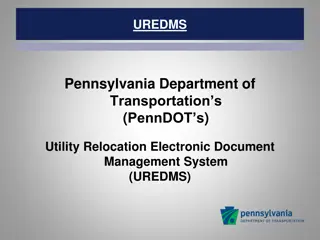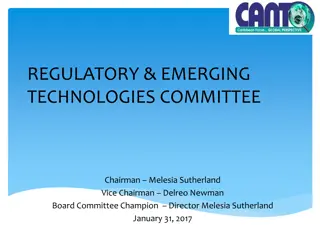Trends in Utility Service Centers: Changing Operations and Emerging Practices
Service center planning needs to adapt to new industry practices and evolving operations. This paper discusses past, present, and emerging changes in the electric utility sector and similar industries such as gas, water, sewer, and communications.
Download Presentation

Please find below an Image/Link to download the presentation.
The content on the website is provided AS IS for your information and personal use only. It may not be sold, licensed, or shared on other websites without obtaining consent from the author.If you encounter any issues during the download, it is possible that the publisher has removed the file from their server.
You are allowed to download the files provided on this website for personal or commercial use, subject to the condition that they are used lawfully. All files are the property of their respective owners.
The content on the website is provided AS IS for your information and personal use only. It may not be sold, licensed, or shared on other websites without obtaining consent from the author.
E N D
Presentation Transcript
Trends in Utility Service Centers Service center planning needs to consider new practices in the industry and the operations these facilities support. By Bob Lambe & Keith McClanahan
Introduction Why are Service Centers Changing? How the industry works is changing, and the way service center facilities support these vital operations is evolving as well. This paper is an overview of some past, present, and emerging changes in the electric utility industry that impact service center planning. Similar industries such as gas, water, sewer, and communications have many of the same issues, but some details are specific to each particular industry. 2
What is a Service Center? Also called: Operations work centers, District headquarters, Crew facilities, etc. The primary function is not as much a place where work is done, as the place that supports work in the field. Service centers range from large industrial complexes to small rural sites; some are no- frills and others reflect local architectural styles. 3
The Traditional Service Center These types of facilities have traditionally been islands unto themselves, with a full complement of everything needed for the electric operation in the region: Distribution and/or Transmission Crews. Substation operations. Meter reading. Engineering/design & work planning. Vehicle maintenance. Material warehousing. Dispatch, communications, and storm operations. District management, environmental, & safety. Customer service and bill payment office. Community relations, business development. Regional administration. 4
Same Old Changes... Some changes have been going on for years: Field work locations change: As growth occurs. As infrastructure ages. Mergers change territories, consolidate administration Re-organizations change work assignments/flow. Technology improvements change work practices; reduce and centralize support staff: Internet, computers/word processing allow central support. Material handling booms and other equipment. Proliferation of electronic devices increase customer sensitivity to outages. 5
Common Recent Trends... Some types of changes are increasing: The business environment is more demanding: Just-in-Time delivery and 24/7 everything. Increased cost reduction pressure. Increased interest in sustainability. Technology change is accelerating: Improved diagnostics and dispatch. Cell phones, GPS, and mobile devices. Industry practices are more sophisticated: More scheduled shifts, especially for first responders Mature contractor environment (typically construction). Use of separate storm/emergency response sites for large events. 6
Whats Next?... Some types of changes are just emerging: The Smart Grid and other IoT may improve system diagnostics and avoid/mitigate some issues. Likely to increase dependence on communications. Distributed generation (and MicroGrids) may reduce localized dependence on the grid for power. Will battery power also provide real-time reliability? Drones may provide rapid detection and even response. Can the first responder be a flying robot? 3-D Printing may reduce need to carry some parts ...and many current trends/changes will continue 7
Implications for Service Center Planning Still need service centers for foreseeable future It is not feasible for large utility trucks to go home for most workers/locations. Location requirements are becoming more about travel time (cost) than CAIDI (response) First responders are already in field & using GPS dispatching Major storm restoration using temporary logistic centers. Facility design evolving into range of logistic support sites for field crews from autonomous regional HQs Small/temporary sites provide local base for field crews only. Larger sites provide regional operations such as direct crew support, working materials and required fleet maintenance. Some functions centralized (dispatch, engineering) for efficiencies where technology allows. Other functions may be co-located based on space availability. 8
An Evolving Service Center Approach Good location, flexible building, and adequate yard area are most important. Many companies are templating service centers to improve consistent work practices for safety, effective support, and cost control. The evolution (and philosophy) of which functions to centralize varies by organization. There are many stakeholders and work process issues associated with these vital field operations. 9
How Can You Prepare? Know Where You Stand Benchmark your service center facilities with the industry https://facilityissues.com/utilities-council/ Evaluate the travel time from your service center locations https://facilityissues.com/utilities-council/service-center- travel-time-benchmarking Plan for Change Share best practices with your peers Anticipate change when making investments in service center facilities Start Educating Stakeholders Regulators, management, employees, customers, shareholders 10
Read more about utility facility benchmarking or signup to participate: https://facilityissues.com/utilities-council/ Email or call with questions: Rlambe@FacilityIssues.com 315-601-6010
